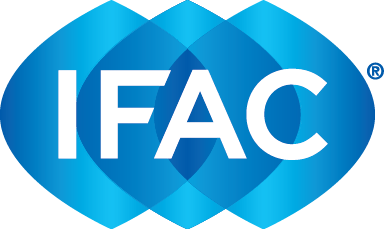This is the fifth year that IFAC has reached out to small- and medium-sized practitioners (SMPs) to ask them to comment on the future of their business. Last year, the survey included questions related to environmental impacts and technologies, as well as questions related to finance and international operations.
I want to encourage more SMPs in Canada and the US to spend the few minutes it takes to answer this survey, particularly the section on environmental impacts. Why? Easy—while the environmental issue was rated as the least commonly offered type of business advisory and consulting services in the 2014 survey, this must change.
SMPs need to prepare themselves NOW for the demands from their clients for help to make sense of the risks from environmental issues from small- and medium-sized enterprises (SMEs). Climate disruption is a business challenge that cannot be dismissed. Mother Nature is returning fire for our folly. This is not a cry for the doomsday rush from the lunatic fringe from the far side. Unless you consider Mark Carney, Governor of the Bank of England and former Governor of the Bank of Canada, one of the leading lunatics. He recently spoke to business executives and warned of climate change concerns. While his message is geared to governments involved in the G-20, multi-nationals, and institutional investors, you cannot help but get the message that business unusual is becoming the norm. Unquestionably the impact of climate disruption is profound, and it is rising.
As Hurricane Sandy destruction along the Atlantic coast in October 2012 demonstrated, the pounding small business took was not only delivered by the storm. The impact reverberated due to the financial consequences of the storm’s aftermath. Dun and Bradstreet tallied the price and it was in the billions, affecting 1.5 million small businesses, which employed 9.3 million employees.Other reports stated that many SMEs, already in a fragile financial state, did not recover. The effects of climate disruption are not limited to hurricanes of course. This year, there has been numerous examples of climate disruption including flooding in Calgary, and wildfires in California and British Columbia, and catastrophic flooding is sweeping across parts of the US South.
Of the seven business sectors that are expected to be most directly affected by climate disruption, the two that may cause small business the most direct challenge include agriculture and insurance. As yields drop from drought, extreme heat and storms, costs will rise in the production of food, and food prices will increase. While potential losses have historically been covered by insurance policies, this may not be an option in the future. Insurance costs are rising and more insurers are excluding the obvious high-risk situations, such as businesses in flood plains.
How many SMEs have even simple emergency or disaster management plans? How many small businesses have business continuity plans? How many have succession plans? Most small businesses operate informally, so a written plan is not the norm. A disaster plan written on the back of a napkin is unreadable if soggy and wet—and a poor solution for the future even if dry. An uninsured business is unlikely to secure contracts, and who is going to buy a business with a time-dated future based on high tides?
However, while events of this nature are becoming more common, the primary opportunity for SMPs is to help their SME clients realize returns from better management of their relationship with the environment in non-event periods, without the adversity of disaster. There is a significant opportunity to help SMEs do “better with less” by improving everyday activities, products, and services. Simple behavior changes can result in cost savings and a reduced environmental footprint—savings from as little as a few dollars to thousands of dollars. The results can be immediate to a few weeks or months. Some people are surprised at how valuable and rewarding even “random acts of green” can be.
While not everyone will agree with my assessment of these important issues, SMPs may have greatness thrust upon them regardless. I expect that future business for SMPs related to the environment is going to increase. Why SMPs? Well, quite simply, they are trusted business advisors to SMEs. SMPs are uniquely positioned to help.
Even if an SMP does not want to become an environment and business expert, they are often asked by their SME clients to direct them to those experts that the SMP has vetted. At the least an SMP needs to know the jargon and the basics to be able to screen these other experts. SMPs need to be confident in what they know about environmental management or, as knowledgeable and skilled, in the business of better environmental management as they are in other business areas.
So what does this have to do with the IFAC Global SMP survey? SMPs need to let IFAC know what they see on their horizon. IFAC, and your national professional accountancy organization, can in turn address these needs based on the results and develop the tools and the learning programs to accelerate the learning curve for SMPs.
So take a few minutes, help IFAC help you by taking the survey.

